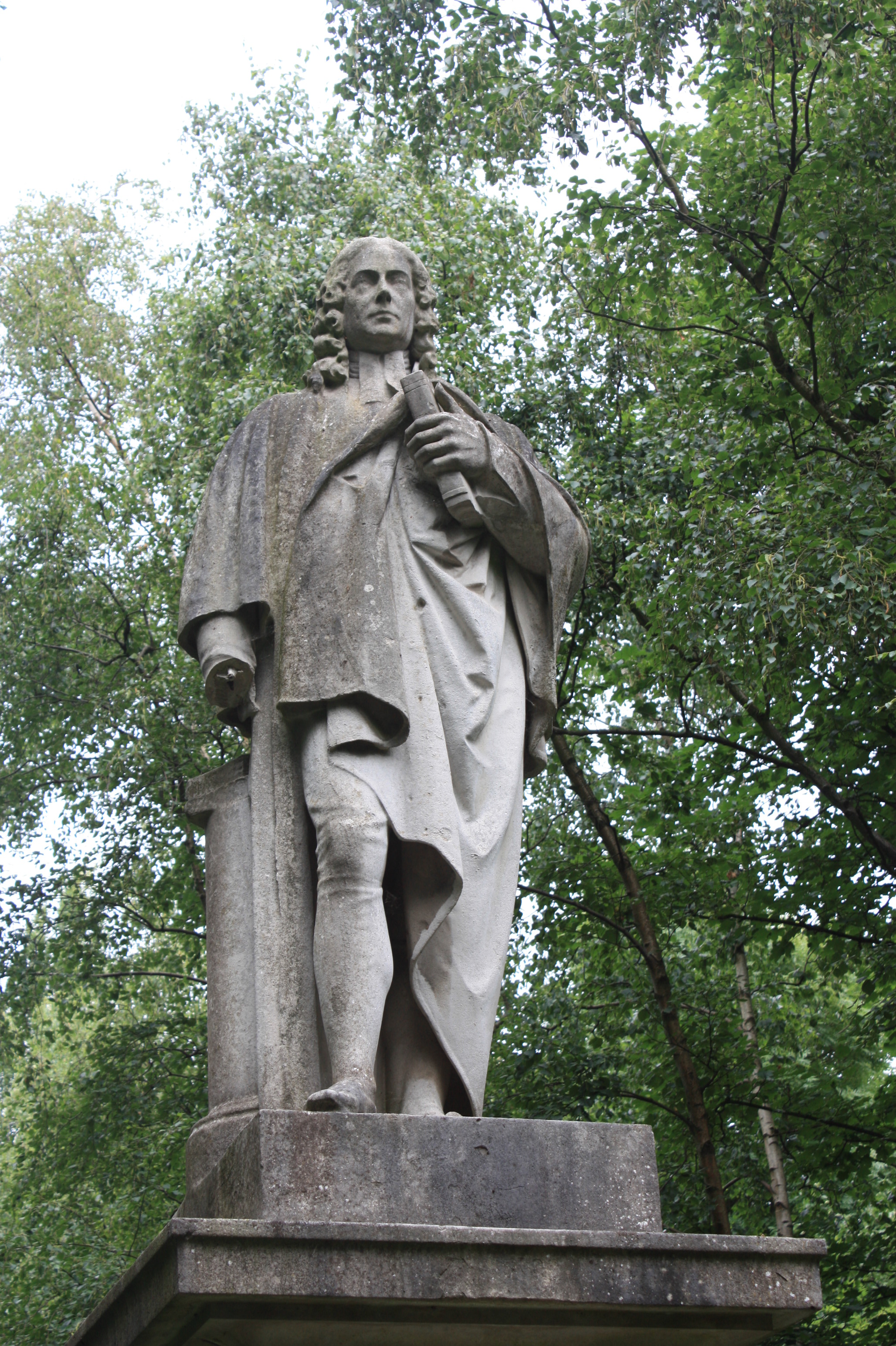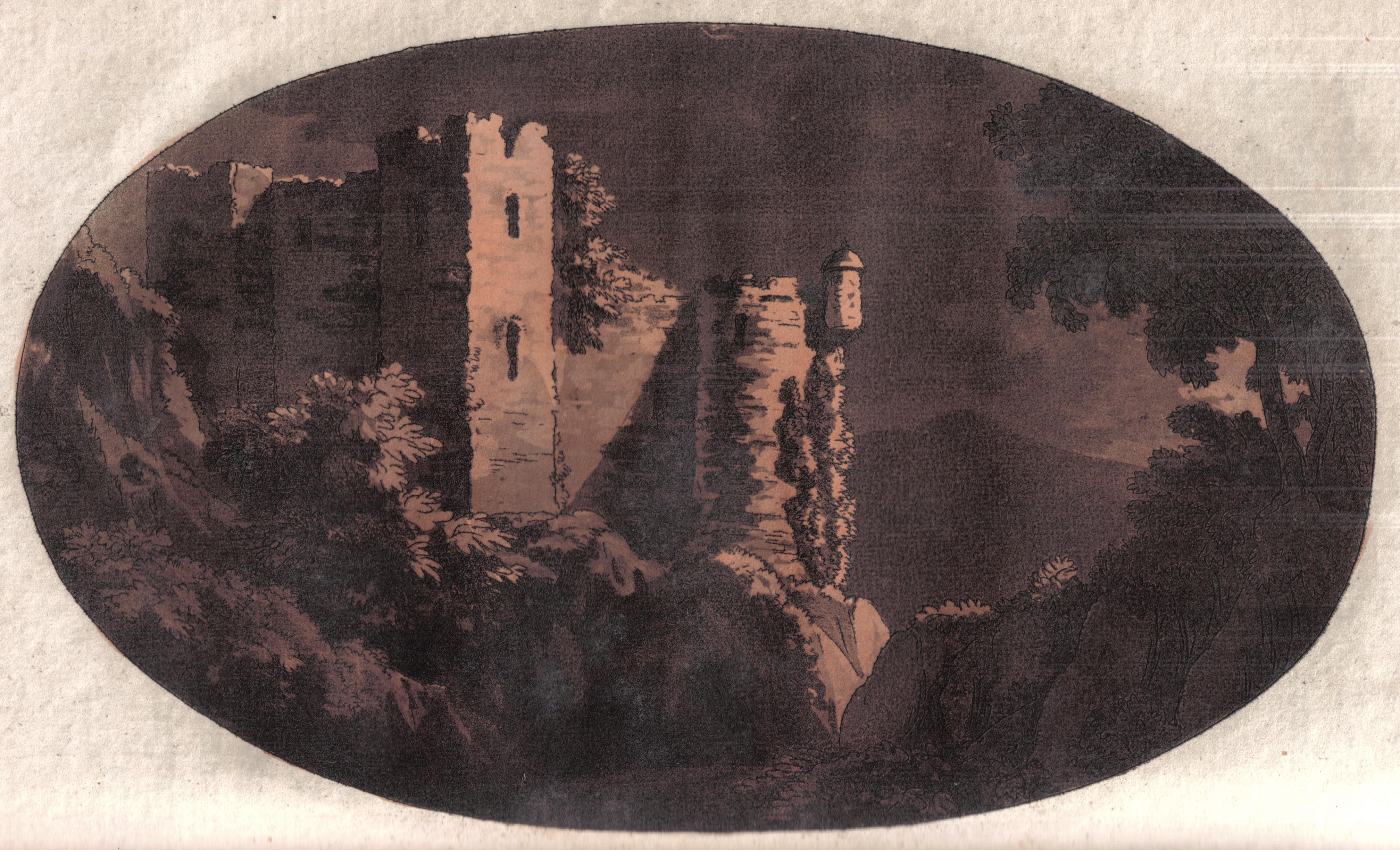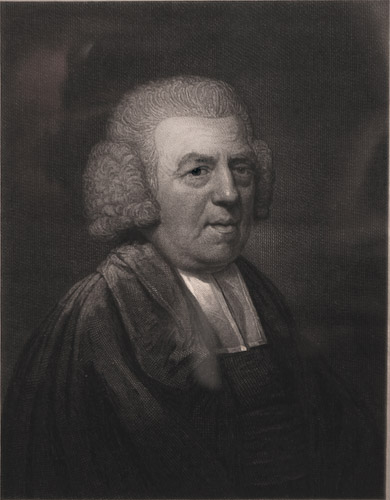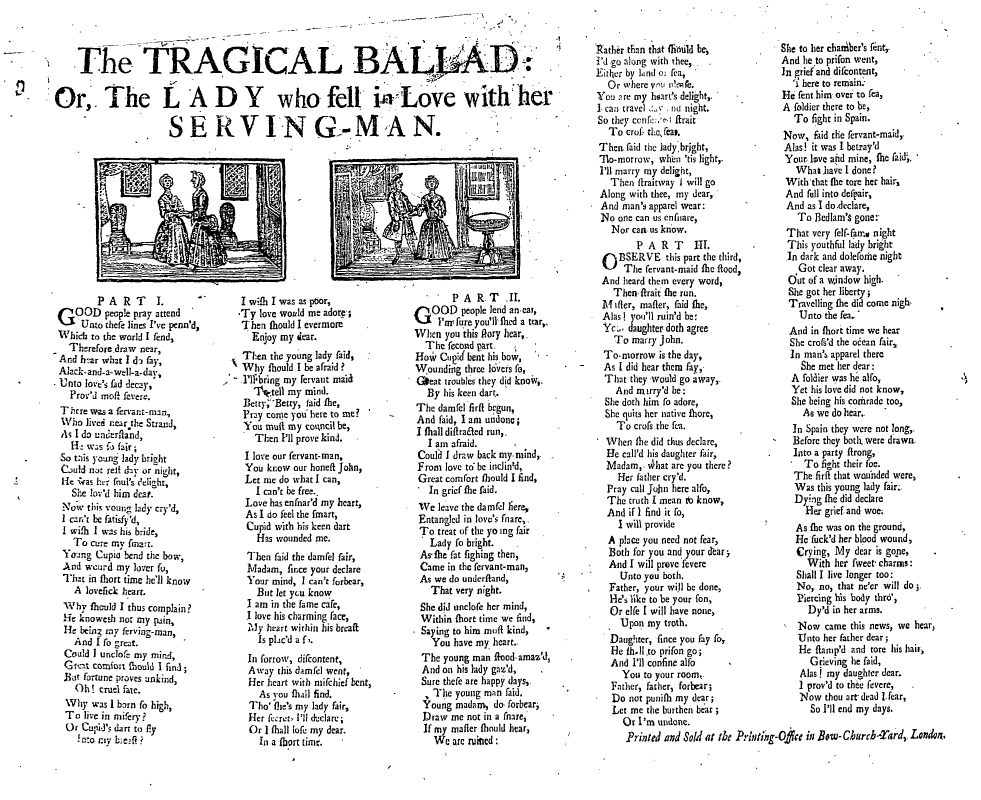|
Cheap Repository Tracts
The ''Cheap Repository Tracts'' consisted of more than two hundred moral, religious and occasionally political tracts issued in a number of series between March 1795 and 1817, and subsequently re-issued in various collected editions until the 1830s. They were devised by Hannah More and intended for sale or distribution to literate poor people, as an alternative to what she regarded as the immoral traditional broadside ballad and chapbook publications. The tracts proved to be enormously successful with more than two million copies sold or distributed during the first year of the scheme. Background During the early 1790s there was widespread concern about the possibility of a popular uprising in Britain following the French Revolution, and the radical ideas which were circulating in popular publications. The English religious writer and philanthropist Hannah More referred to the ‘corrupt and vicious little books and ballads which have been hung out of windows in the most alluring f ... [...More Info...] [...Related Items...] OR: [Wikipedia] [Google] [Baidu] |
Tract (literature)
A tract is a literary work and, in current usage, usually religious in nature. The notion of what constitutes a tract has changed over time. By the early part of the 21st century, a tract referred to a brief pamphlet used for religious and political purposes, though far more often the former. Tracts are often either left for someone to find or handed out. However, there have been times in history when the term implied tome-like works. A ''tractate'', a derivative of a tract, is equivalent in Hebrew literature to a ''chapter'' of the Christian Bible. History The distribution of tracts pre-dates the development of the printing press, with the term being applied by scholars to religious and political works at least as early as the 7th century. They were used to disseminate the teachings of John Wycliffe in the 14th century. As a political tool, they proliferated throughout Europe during the 17th century. They have been printed as persuasive religious material since the invention ... [...More Info...] [...Related Items...] OR: [Wikipedia] [Google] [Baidu] |
Patience
(or forbearance) is the ability to endure difficult circumstances. Patience may involve perseverance in the face of delay; tolerance of provocation without responding in disrespect/anger; or forbearance when under strain, especially when faced with longer-term difficulties, or being able to wait for a long amount of time without getting irritated or bored. Patience is the level of endurance one can have before disrespect. It is also used to refer to the character trait of being steadfast. Antonyms include hastiness and impetuousness. Scientific perspectives In psychology and in cognitive neuroscience, patience is studied as a decision-making problem, involving the choice of either a small reward in the short-term, versus a more valuable reward in the long-term. In 2005 a study involving common marmosets and cottontop tamarins, animals of both species faced a self-control paradigm in which individuals chose between taking an immediate small reward and waiting a variable ... [...More Info...] [...Related Items...] OR: [Wikipedia] [Google] [Baidu] |
A Journal Of The Plague Year
''A Journal of the Plague Year: Being Observations or Memorials, Of the most Remarkable Occurrences, As well Publick as Private, which happened in London During the last Great Visitation In 1665'', commonly called ''A Journal of the Plague Year'', is a book by Daniel Defoe, first published in March 1722. It is an account of one man's experiences of the year 1665, in which the bubonic plague struck the city of London in what became known as the Great Plague of London, the last epidemic of plague in that city. The book is told somewhat chronologically, though without sections or chapter headings, and with frequent digressions and repetitions. Presented as an eyewitness account of the events at the time, it was written in the years just prior to the book's first publication in March 1722. Defoe was only five years old in 1665 when the Great Plague took place, and the book itself was published under the initials ''H. F.'' and is probably based on the journals of Defoe's uncle, H ... [...More Info...] [...Related Items...] OR: [Wikipedia] [Google] [Baidu] |
Daniel Defoe
Daniel Defoe (; born Daniel Foe; – 24 April 1731) was an English writer, trader, journalist, pamphleteer and spy. He is most famous for his novel '' Robinson Crusoe'', published in 1719, which is claimed to be second only to the Bible in its number of translations. He has been seen as one of the earliest proponents of the English novel, and helped to popularise the form in Britain with others such as Aphra Behn and Samuel Richardson. Defoe wrote many political tracts, was often in trouble with the authorities, and spent a period in prison. Intellectuals and political leaders paid attention to his fresh ideas and sometimes consulted him. Defoe was a prolific and versatile writer, producing more than three hundred works—books, pamphlets, and journals — on diverse topics, including politics, crime, religion, marriage, psychology, and the supernatural. He was also a pioneer of business journalism and economic journalism. Early life Daniel Foe (his original name) was pr ... [...More Info...] [...Related Items...] OR: [Wikipedia] [Google] [Baidu] |
Divine Songs Attempted In Easy Language For The Use Of Children
''Divine Songs Attempted in Easy Language for the Use of Children'' (also known as ''Divine and Moral Songs for Children'' and other similar titles) is a collection of didactic, moral poetry for children by Isaac Watts, first published in 1715. Though Watts's hymns are now better known than these poems, ''Divine Songs'' was a ubiquitous children's book for nearly two hundred years, serving as a standard textbook in schools. By the mid-19th century there were more than one thousand editions. Three of the best-known poems in the collection are "Praise for Creation and Providence", " Against Idleness and Mischief", and "The Sluggard". "Praise for Creation and Providence" (better known as "I sing the mighty power of God") is now a hymn sung by all ages. "Against Idleness and Mischief" and "The Sluggard" (better known as "How doth the little busy bee" and "'Tis the voice of the sluggard") were both meant to teach children the importance of hard work, and were extremely well known i ... [...More Info...] [...Related Items...] OR: [Wikipedia] [Google] [Baidu] |
Isaac Watts
Isaac Watts (17 July 1674 – 25 November 1748) was an English Congregational minister, hymn writer, theologian, and logician. He was a prolific and popular hymn writer and is credited with some 750 hymns. His works include " When I Survey the Wondrous Cross", "Joy to the World", and " Our God, Our Help in Ages Past". He is recognized as the "Godfather of English Hymnody"; many of his hymns remain in use today and have been translated into numerous languages. Life Watts was born in Southampton, Hampshire, England, in 1674 and was brought up in the home of a committed religious nonconformist; his father, also Isaac Watts, had been incarcerated twice for his views. Watts had a classical education at King Edward VI School, Southampton, learning Latin, Greek, and Hebrew. Watts displayed a propensity for rhyme from an early age. He was once asked why he had his eyes open during prayers, to which he responded: He received corporal punishment for this, to which he cried: Watt ... [...More Info...] [...Related Items...] OR: [Wikipedia] [Google] [Baidu] |
William Gilpin (priest)
William Gilpin (4 June 1724 – 5 April 1804) was an English artist, Church of England cleric, schoolmaster and author. He is best known as a travel writer and as one of those who originated the idea of the picturesque.Malcolm Andrews"Gilpin, William (1724–1804)"''Oxford Dictionary of National Biography''. Retrieved 20 March 2016 Oxford, UK: OUP, 2004, pay-walled. Life Gilpin was born in Cumberland, the son of Captain John Bernard Gilpin, a soldier and amateur artist. From an early age he was an enthusiastic sketcher and collector of prints, but while his brother Sawrey Gilpin became a professional painter, William opted for a career in the church, graduating from Queen's College, Oxford in 1748. While still at Oxford, Gilpin anonymously published ''A Dialogue upon the Gardens... at Stow in Buckinghamshire'' (1748). Part guidebook to Stowe, part essay on aesthetics, it shows that Gilpin had already begun to develop his ideas on the picturesque. Unusually for the time, Gilpin ... [...More Info...] [...Related Items...] OR: [Wikipedia] [Google] [Baidu] |
John Newton
John Newton (; – 21 December 1807) was an English evangelical Anglican cleric and slavery abolitionist. He had previously been a captain of slave ships and an investor in the slave trade. He served as a sailor in the Royal Navy (after forced recruitment) and was himself enslaved for a time in West Africa. He is noted for being author of the hymns '' Amazing Grace'' and '' Glorious Things of Thee Are Spoken''. Newton went to sea at a young age and worked on slave ships in the slave trade for several years. In 1745, he himself became a slave of Princess Peye, a woman of the Sherbro people in what is now Sierra Leone. He was rescued, returned to sea and the trade, becoming Captain of several slave ships. After retiring from active sea-faring, he continued to invest in the slave trade. Some years after experiencing a conversion to Christianity, Newton later renounced his trade and became a prominent supporter of abolitionism. Now an evangelical, he was ordained as a Church o ... [...More Info...] [...Related Items...] OR: [Wikipedia] [Google] [Baidu] |
Zachary Macaulay
Zachary Macaulay ( gd, Sgàire MacAmhlaoibh; 2 May 1768 – 13 May 1838) was a Scottish statistician and abolitionist who was a founder of London University and of the Society for the Suppression of Vice, and a Governor of British Sierra Leone. Early life Macaulay was born in Inveraray, Scotland, to Margaret Campbell and John Macaulay (1720 – 1789), who was a minister of the Church of Scotland and a grandson of Dòmhnall Cam. He had two brothers: Aulay Macaulay, who was an antiquary, and Colin Macaulay, who was a general and an abolitionist. Zachary Macaulay was not educated in, but taught himself, Greek and Latin and English literature. Career Macaulay worked in a merchant's office in Glasgow, where he fell into bad company and began to indulge in excessive drinking. In late 1784, when aged 16 years, he emigrated to Jamaica, where he worked as an assistant manager at a sugar plantation, at which he objected to slavery as a consequence of which he, contrary to the prefer ... [...More Info...] [...Related Items...] OR: [Wikipedia] [Google] [Baidu] |
William Mason (religious Writer)
William Mason (1719 – 29 September 1791) was a Calvinist writer. Mason was born in Rotherhithe. He wrote a number of very popular Christian books, and was twice briefly editor of The Gospel Magazine, immediately before and immediately after Augustus Montague Toplady. Selected published writings * A Spiritual Treasury for the Children of God' or Read full text on Google Books' * ''The Christian Communicant'' * A commentary on John Bunyan, Bunyan's The Pilgrim's Progress, printed as footnotes in some copies of the same as "Mason's Notes". * The Believer's Pocket Companion' References * Hatfield, Edwin Francis. ''The Poets of the Church'', New York, 1884, pages 412–41 1719 births 1791 deaths English Calvinist and Reformed Christians Anglican writers People from Rotherhithe 18th-century English writers {{Christianity-stub ... [...More Info...] [...Related Items...] OR: [Wikipedia] [Google] [Baidu] |
Street Literature
Street literature is any of several different types of publication sold on the streets, at fairs and other public gatherings, by travelling hawkers, pedlars or chapmen, from the fifteenth to the nineteenth centuries. Robert Collison's account of the subject describes street literature as the "forerunner of the popular press". Leslie Shepard's "History of Street Literature" identifies a range of different publications as indicated by his subtitle: "The Story of Broadside Ballads, Chapbooks, Proclamations, News-Sheets, Election Bills, Tracts, Pamphlets, Cocks, Catchpennies, and Other Ephemera". Street literature therefore includes several different printed formats and publication types. The main formats are: Broadside ballad Broadside ballads are traditional ballads printed on one side of a full sheet or half sheet of paper, often in landscape orientation. Intended to be pasted on to walls for public consultation. Chapbook Chapbooks were small, paper-covered booklets, usually ... [...More Info...] [...Related Items...] OR: [Wikipedia] [Google] [Baidu] |
Broadside Ballads
A broadside (also known as a broadsheet) is a single sheet of inexpensive paper printed on one side, often with a ballad, rhyme, news and sometimes with woodcut illustrations. They were one of the most common forms of printed material between the sixteenth and nineteenth centuries, particularly in Britain, Ireland and North America because they are easy to produce and are often associated with one of the most important forms of traditional music from these countries, the ballad. Development of broadsides Ballads developed out of minstrelsy from the fourteenth and fifteenth century. These were narrative poems that had combined with French courtly romances and Germanic legends that were popular at the King’s court, as well as in the halls of lords of the realm. By the seventeenth century, minstrelsy had evolved into ballads whose authors wrote on a variety of topics. The authors could then have their ballads printed and distributed. Printers used a single piece of paper known as ... [...More Info...] [...Related Items...] OR: [Wikipedia] [Google] [Baidu] |


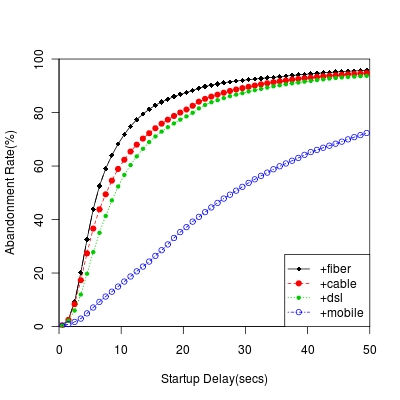

.jpg)

